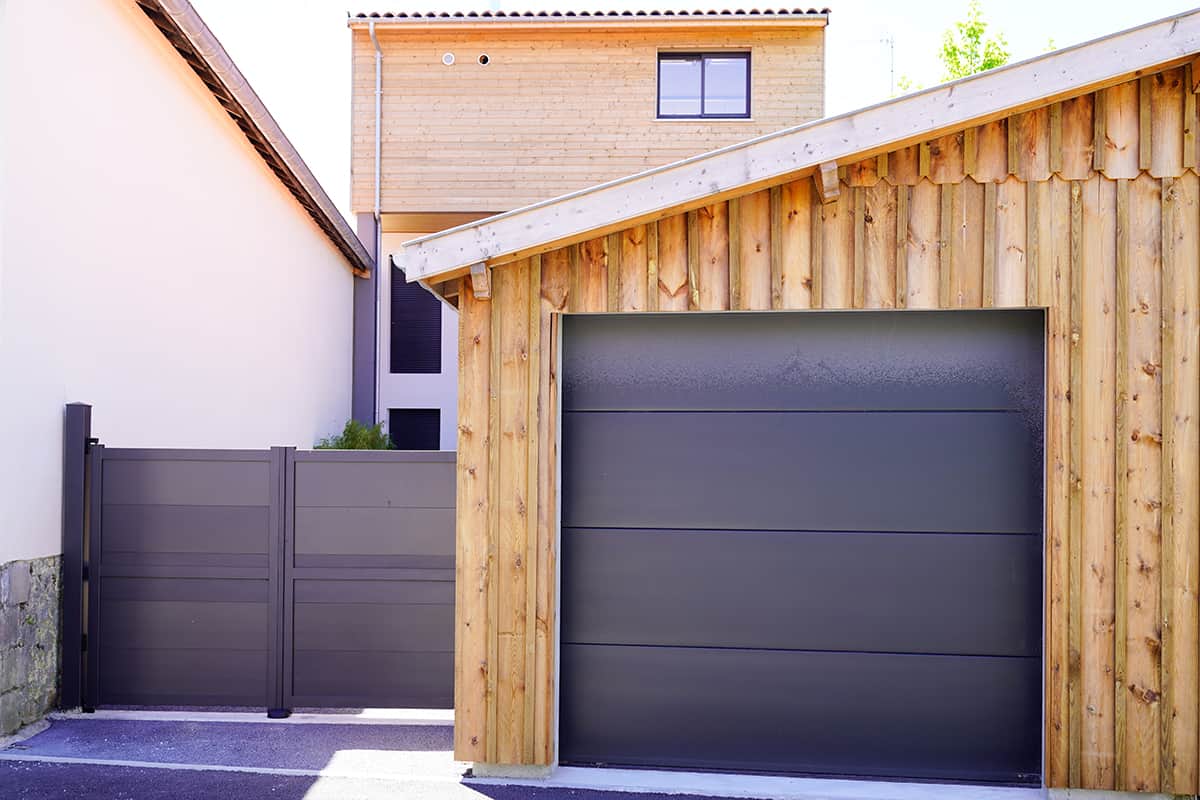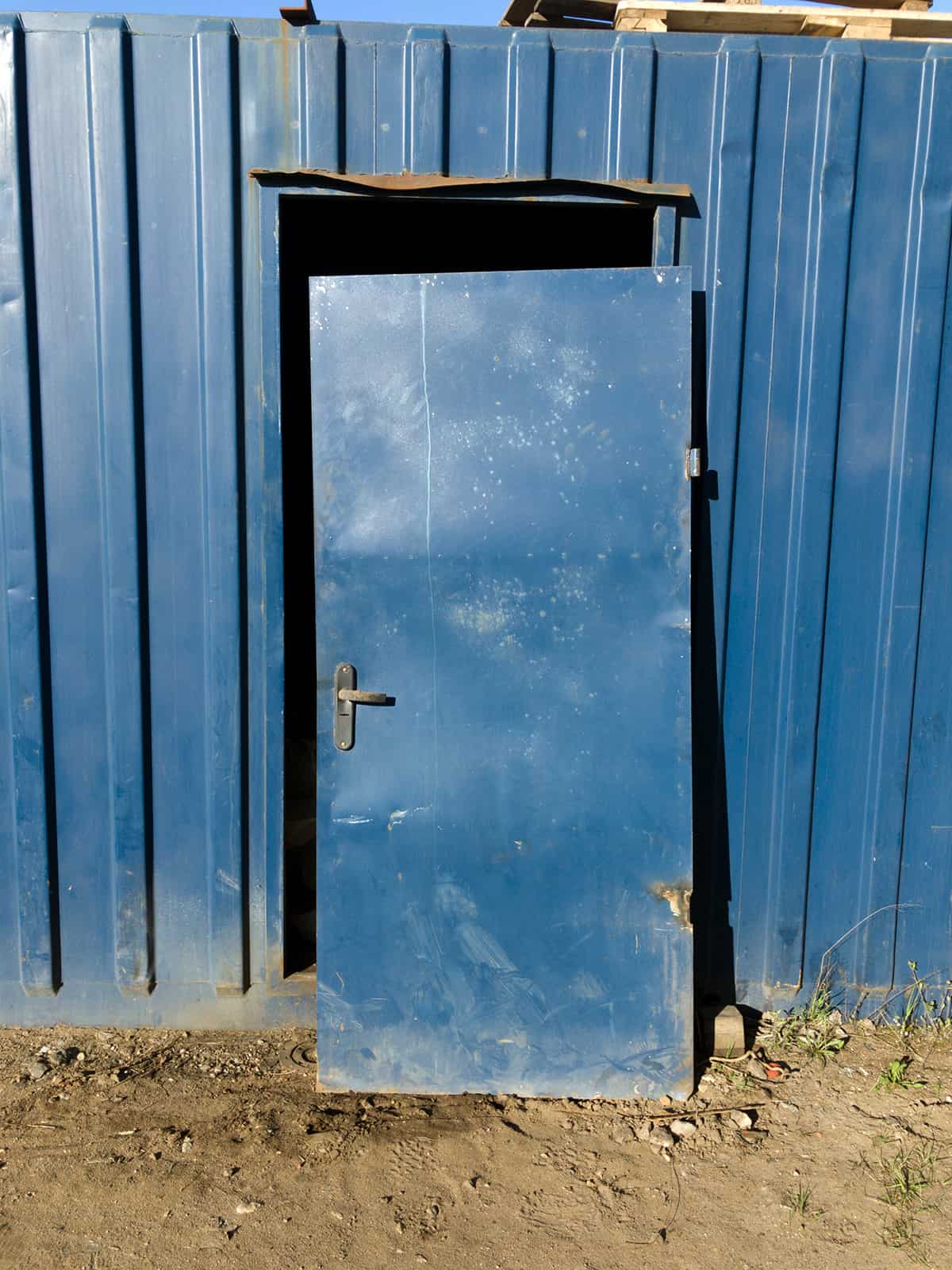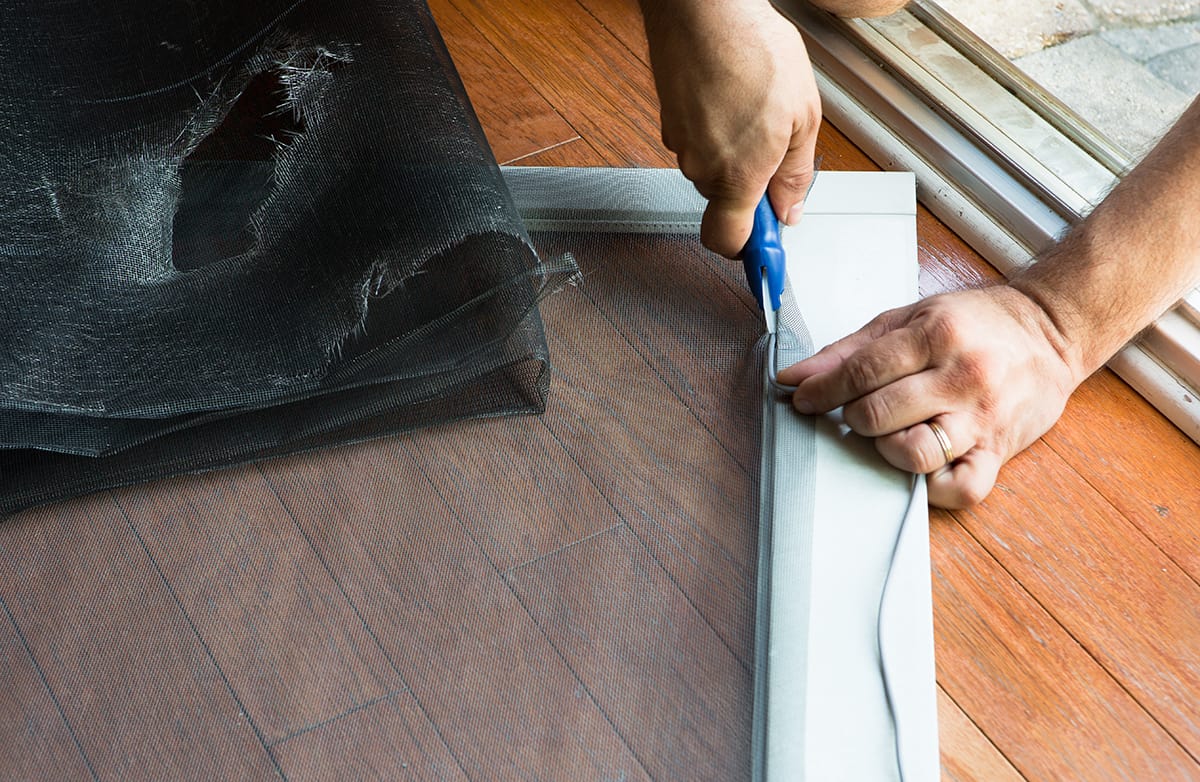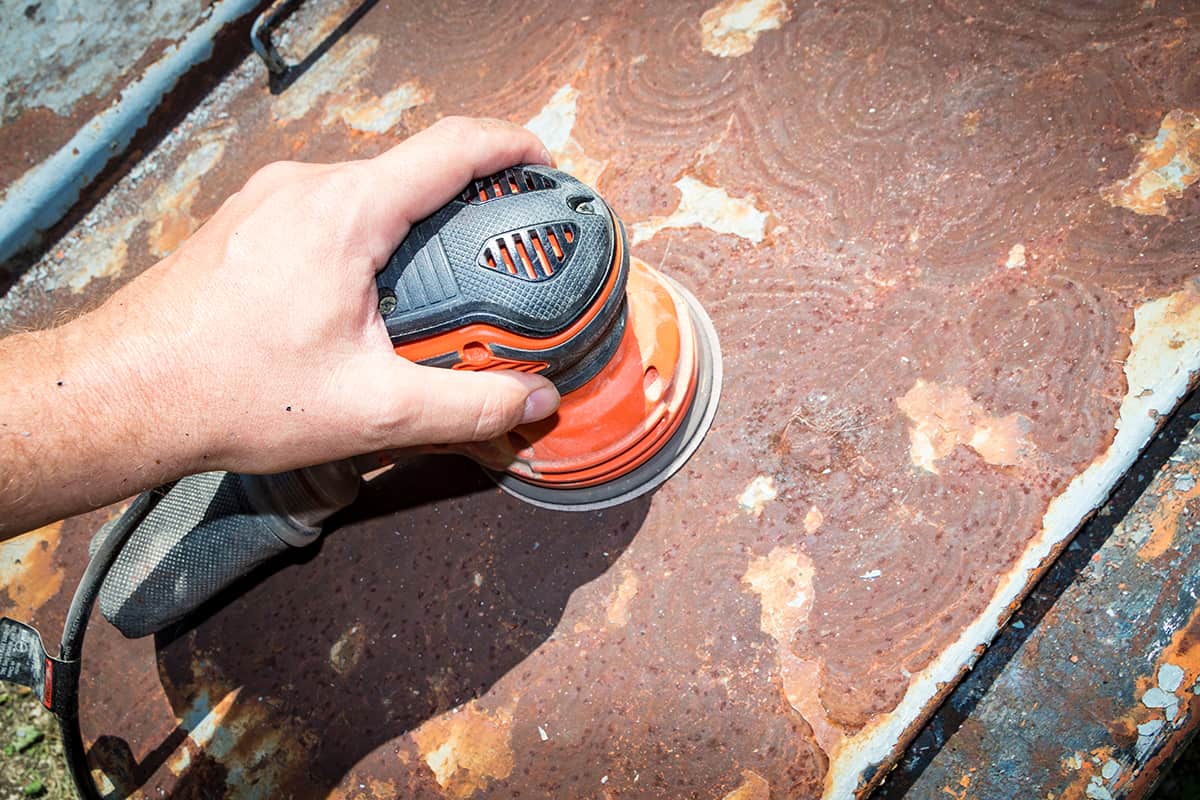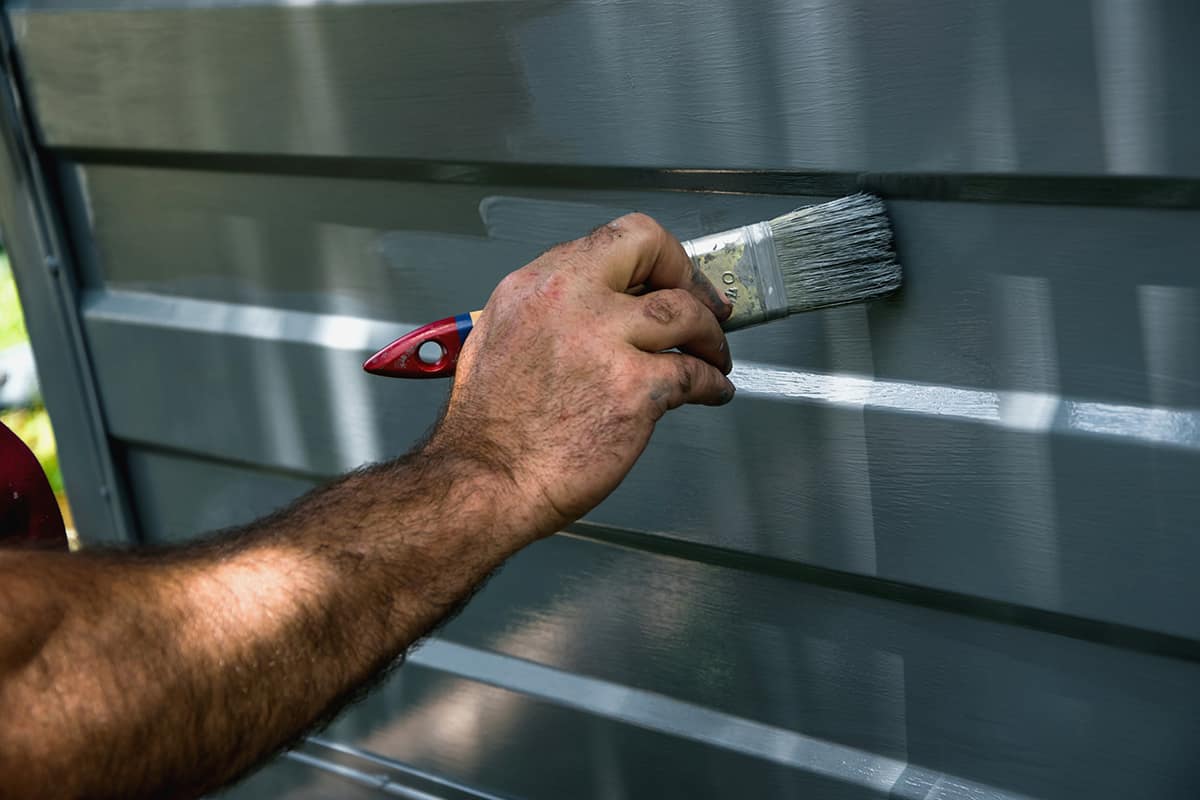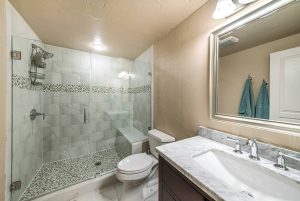Screen doors, storm doors, and garage doors are commonly made from metal, and so they require a different technique for painting compared with wooden doors that most people have experience with.
Paint will not absorb into aluminum like it will with wood, which can make it harder to get a good, smooth finish. Here we explain the steps you need to take to paint an aluminum door for the best results.
Remove the Door
If you are painting an aluminum storm door or another type of aluminum door, then the first thing you need to do is remove it from its hinges.
This might initially seem tricky because storm doors often have pneumatic arms which allow them to close automatically, but these can easily be removed from the door frame by unscrewing the screws which hold them in place. It is possible to paint an aluminum door while it is still attached to the doorframe, but it will be more difficult, and you won’t get the best finish.
An aluminum door will always be smoother and look more professional when it is painted with spray paint, and a storm door that is still in situ cannot be painted with spray paint because it will get onto your siding and flooring.
Instead, if you cannot remove your aluminum door from the frame, you will need to paint it with a paintbrush or small roller.
Set-Up
After removing the door from its hinges, lay it down over a workbench or on the floor in your garage. If you want to protect your surfaces, first cover them in a layer of newspaper or use a dust sheet.
Open your garage door for good ventilation. Alternatively, you could work outside in your yard, laying the door down on an old sheet if the weather is suitable.
Clean the Door
Both the front and the back of the aluminum door will need to be thoroughly cleaned before it can be painted. This is because any grease or dirt can prevent the paint from sticking to the surface.
Use an ammonia-based cleaner or a degreasing cleaner and a rag, and remove any dirt from the door. After the door has been cleaned, use a garden hose to wash the cleaner off or a wet sponge if you are working inside.
Remove or Tape Door Hardware
For the best results, you should remove all of the hardware on the door, such as the door handle, so that these components won’t get paint on them. If removal is not possible, use decorators’ tape to completely cover any hardware.
If your aluminum door has storm glass or screens in it, then remove these by sliding them up and out and putting them to one side. Most storm and screen doors have removable components, but older doors can get jammed if these parts aren’t routinely changed.
If you cannot remove the glass or mesh screens from your doors, then cut a piece of newspaper to size, just slightly smaller than the glass or screen.
Use tape to secure the newspaper in place on top of the glass, with the tape fixed right against the aluminum frame so that the glass is completely covered. This will prevent any paint from getting onto the glass or mesh screen.
Remove Previous Paint
If your aluminum door has been previously painted, then you should remove this paint before repainting it. A paint stripper is the best solution if you want a really clean, professional finish, but you could also use sandpaper if the paint is already starting to flake off in places.
When using paint strippers, always use protective clothing and accessories to avoid inhaling fumes and ensure the space is well ventilated.
If you are going to sand the old paint off the door, choose a medium to fine-grit sandpaper to remove the top layer of paint, working down to a fine grit paper when you get closer to the metal. This is because heavy sanding can scratch and damage the aluminum, so you won’t get a good finish when you’ve painted it.
Create a Key
If you have sanded the door to remove paint, then you can skip this step as you will already have created a key on the surface of the door.
However, if you remove the previous paint with a paint stripper, or if you are working with a door that wasn’t previously painted, then you will need to complete this step.
Using a fine-grit sandpaper, gently sand down the surface of the door. This will ensure a key is created on the door to help the paint stick to it.
Aluminum doors are usually smooth and shiny, which can make it tricky for the paint to adhere. By creating a key, the paint will have a better surface to adhere to and ensure your paint job lasts for a longer time. After sanding, use a wet sponge to remove any dust.
Prime the Door
For the best results, you should apply a paint primer to your door before painting it. This works as a bonder between the door and the paint, helping it to adhere better. It also means the paint will go on more smoothly, and it will have a more hard-wearing finish.
If your door has been removed from its hinges and you are working on it separately to the house, then a spray paint primer is a good option.
This can be sprayed directly onto the door following the manufacturer’s instructions. Spraying the primer will usually be much quicker and easier than painting by hand, and it ensures a more even finish. Allow the primer to dry before turning the door over and repeating the process on the other side. Primer is typically fast-drying, at around one to two hours.
If your door is still attached to your house, then you will not be able to use primer in a spray can. Instead, use a roller for the larger portions of the door and a paintbrush for the edges. If you are painting your door outside, then make sure you are in a shaded position, whether that be with the door attached to the house or if you are out in your yard.
Priming and painting in full sun can cause the paint to bubble and result in a nasty, messy finish. It will also make the paint dry much quicker than it should, which is bad news because the paint doesn’t have the chance to settle and level out before it dries.
If you have removed the door from the frame, choose a shaded spot to complete the project. If you are painting the door while it is attached to the house, you should wait until the sun is on the other side of your property or paint on an overcast day when you aren’t in direct sunlight.
Paint the Door
Once your door is primed, then you can paint it. Choose an exterior paint for exterior aluminum doors in a finish that will be hard-wearing such as gloss or satin.
If your door is not attached to the house, paint in a spray can will be best because it is easier and quicker to use, and it gives more even flawless results. Shake the can and apply it as per the manufacturer’s instructions, moving back and forth across the door and layering the paint as you go.
When it comes to spray paint, the best results are achieved when you apply lots of thin layers of paint rather than a few thick layers of paint, so bear this in mind and apply the spray paint as a fine mist.
Allow the recommended amount of drying time between coats, and continue to apply layers of paint until you are happy with the finish. Allow the door to completely dry before turning it over and painting the other side. Typically, this will be around 24 hours.
If your door could not be removed from the hinges, then you will need to use an exterior paint in a can with a roller and a brush. Use the roller across as much of the door as possible because this will give a smoother finish compared to a brush, which can leave brush strokes even once the paint has dried. Allow the paint to dry before adding more coats, and then repeating the process on the other side of the door.
Reattach Hardware and Rehang
Once your door has had enough coats of paint and it is completely dry, you can remove any decorator’s tape and reattach your hardware.
You can also reinsert the glass or mesh screens if these have been taken out. Hang the aluminum door back up in the correct position and screw the fittings tightly into place so that the door is secure and operating as it should.
Relax!
Congratulations, your aluminum door painting project is complete. Now all you need to do is sit back and admire your handiwork.
